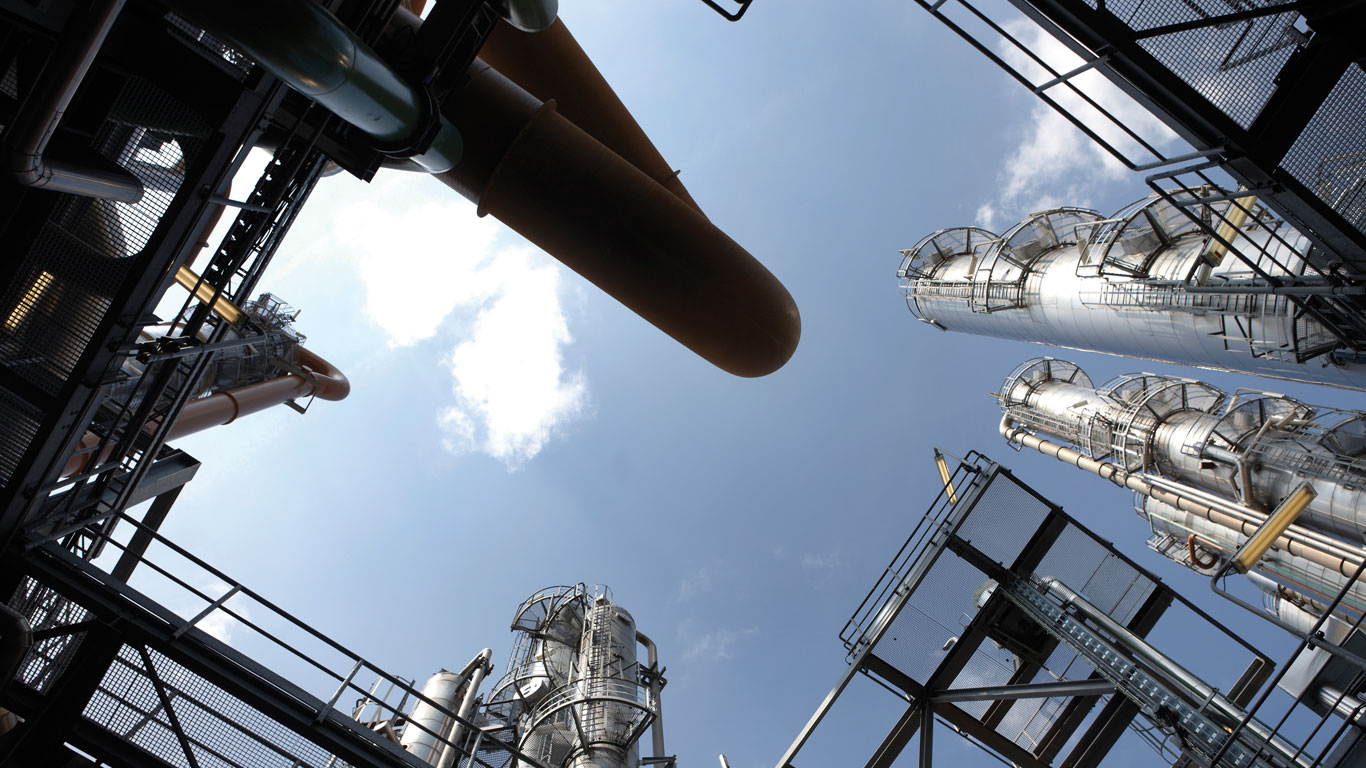INEOS is different. You can see it in the faces of those who work for the company and feel it in the air. There is a buzz about the place. Over the years INEOS may have grown into the world’s third largest chemical company, but it has not lost its spirit.
Working for INEOS promotes independent thinking. But what’s good to know is that there is a team behind you to help, if necessary. To me, entrepreneurship means seizing the initiative, inspiring others and driving results.
Stijn Dekeukeleire RTD engineer
INEOS Oxide, Belgium
Having worked for a more traditional ‘blue chip’ chemical company in the past where life was safe and ‘cosy’, the INEOS environment is much more challenging and demanding. But, because of that, I feel more involved and able to make a difference and, as a result, I enjoy the job a lot more. INEOS constantly looks to maximise business opportunities through innovative solutions whether these are technical, commercial or financial.
Dave Hart
INEOS Nitriles, Seal Sands, UK
INEOS doesn’t accept that things need to be done in a certain way, just because that’s how they’ve always been done. The company likes to challenge convention and is constantly striving to achieve the same results while driving down costs. I like the fact that I work for a company that challenges you to seek your own solutions but it can be challenging, at times frustrating and sometimes uncomfortable.
Paul McNulty
INEOS Nitriles, Seal Sands, UK
Encouraging employees to seek solutions to their own problems results means we feel involved in our own destiny. Such a spirit also creates an environment which allows us to easily build solid networks with people within INEOS and outside the company.
Johan Loots
Sr. production engineer utilities + energy & carbon
INEOS Oxide, Belgium
INEOS is an inspiring environment that allows you to go as far as your mind lets you. So often people believe working long hours is the way to go, but working on the right things is probably more important than sitting at a desk for hours on end. The secret is to get focused and stay focused and trust your own instincts. Because our business is constantly changing, we must adapt to the changing circumstances and set new goals and implement smarter solutions. Believing in yourself makes it so much easier to win over others to achieve the same goals. You can sit around and analyze forever if you want, but while you are doing that the competition has moved on.
Peggy Gerits
Planning & logistics manager
INEOS Oxide, Belgium
AT INEOS we are encouraged to think ‘outside the box’ to find solutions to problems and develop the business. You can see new possibilities every day at work. Although we are all different and have different features and characteristics, innovation is one we all share.
Carita Johansson
HR specialist/communications officer
INEOS ChlorVinyls, Stenungsund, Sweden
INEOS is definitely an entrepreneurial company in how it develops its businesses, products and people. It is both stimulating and rewarding to be given the freedom to think differently and see new possibilities opening up. And there is evidence of it at work, be it in how we safely run the business or constantly try to reduce our impact on the environment.
Kjell Andersson
Constructor
INEOS ChlorVinyls, Stenungsund, Sweden
INEOS feels like a newborn company even though it was founded 15 years ago. It cuts through the nonsense and challenges it to seeks solutions to its own problems. I have worked for other companies where I have become so bogged down in bureaucracy and hit so many brick walls that I lost enthusiasm to work for them.
Debbie Clark
PA/office manager
INEOS Group, Hampshire, UK
INEOS operates very differently compared to other companies, especially in the chemical industry. People who like hierarchies will be lost here. INEOS forces you to think differently, to be flexible and straightforward and work beyond conventions. If you’re someone who feels comfortable with that, who enjoys an immense amount of freedom and wants to make a difference, then this is the company for you. It is great to have no limits apart from the ones you set yourself. Here we are encouraged to try new paths, to explore fresh ideas, and to see the bigger picture. INEOS is about the passion – and a will – to drive things forward.
Dr. Anne-Gret Iturriaga Abarzua
Head of corporate communications
INEOS Olefins & Polymers Europe North
I certainly view INEOS as an entrepreneurial chemical company because of its willingness to challenge existing working practices and attitudes in society. Working for the company is incredibly rewarding because it does encourage you to look for, find and implement solutions to your own problems.
David Sopher
INEOS Nitriles, Seal Sands, UK
INEOS’ management is very courageous and successful. My job is so enjoyable that it doesn’t feel like work. To me entrepreneurship is taking personal responsibility for the business, and over the years I have seen it hard at work within the company especially during the 2008/2009 crisis and more recently during the dispute at Grangemouth.
Manfred Hartung
Asset manager energy department
INEOS Olefins & Polymers Europe North
As a recent graduate, INEOS makes me a ‘go-get-it’ type of engineer. I am being trained to get out there and figure things out for myself while having the backing and support of well-trained and highly experienced individuals to help me out when needed. At INEOS you are given real responsibility, real accountability, and real exposure to the business world. If you have the right attitude and mindset, you can go far because the opportunity is there. Every day we deal with real issues, real problems and we work together so that by the end of the day most problems are solved.
Amadou Tounkara
I&E reliability engineer
INEOS O&P USA
At INEOS we are given the freedom to use our knowledge and resources to develop innovative and high-value ideas in a proactive and non-fearful manner. That approach means we are not left ‘fighting fires’ or getting by on traditional, prescribed or “status quo” ways of doing business.
Mark Gessner
Engineering advisor
INEOS O&P USA
It is Interesting and exciting to work for an organisation that challenges you to seek solutions to your own problems. At INEOS you are encouraged to be resourceful, find new ways of working, and develop your own role.
Annika Petrusson
Assistant to Managing Director
INEOS ChlorVinyls, Stenungsund, Sweden
Nothing is spoon-fed at INEOS which means you develop and learn so much faster than you would otherwise. The lack of an enforced hierarchy really allows people to flourish and it is a real credit to the company that every member of the organisation takes a personal investment in its success. I see evidence of entrepreneurship at work on a daily basis because I am surrounded by people who are not limited to their job description and constantly seeking opportunities for business development, improvement and efficiency. This is of their own accord with no pushing needed from anyone else. There is a real degree of self-discipline at work coupled with sheer drive and determination which permeates throughout the organisation.
Gabriella Isidro
Polymer Product Officer
INEOS Olefins & Polymers Europe North


















